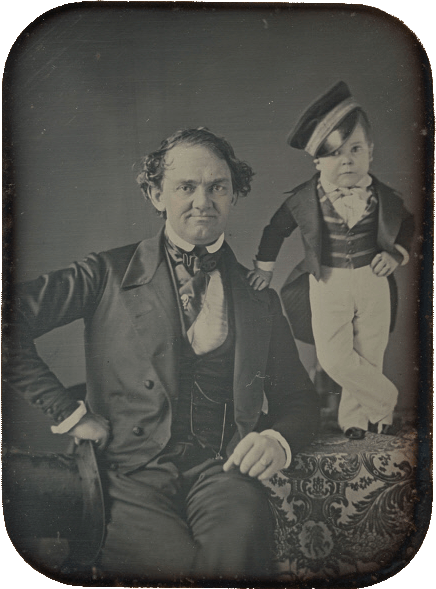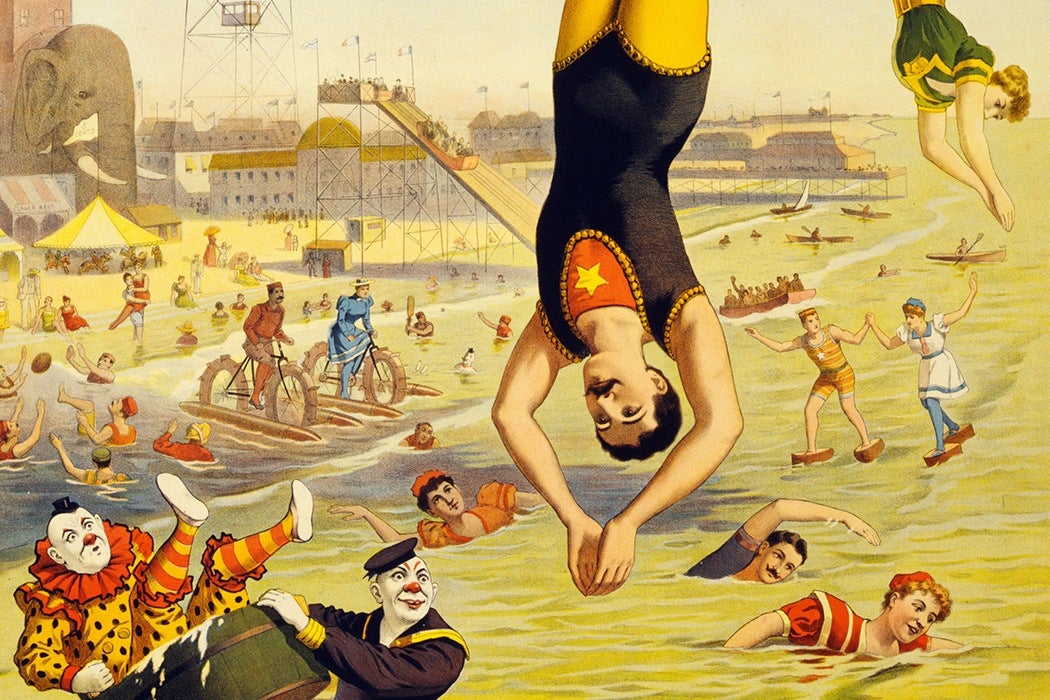Phineas Taylor (P. T.) Barnum, born July 5, 1810, in Bethel, Connecticut, has been described as “the first great advertising genius and the greatest publicity exploiter the world has ever known.” Barnum is popularly known for the adage that a sucker is born every minute (although the actual origins of the saying are disputed).
Barnum is often seen as a rascally rogue, profiting off of exploited celebrities like the singer Jenny Lind and the tiny Tom Thumb, while popularizing the freak show and circus as modern entertainment. “The Greatest Show on Earth” was how, in typical Barnum style, he described his circus. It finally closed this year, beset by high costs, lowered attendance, and animal rights protests, an entertainment for another era. But for many, it was all fun while it lasted.
Conscious of his public image, Barnum wrote numerous versions of his own autobiography, each time exploring his various cons. He portrayed himself as a largely benign figure, providing playful games for a public hungry for entertainment. Richard Herskowitz places Barnum as a transitional figure between the frauds of early American patent medicine boosters and modern advertising, for whom “he is a beloved and embarrassing founder.”

(via Wikimedia Commons)
“Barnum’s great discovery was not how easy it was to deceive the public, but rather, how much the public enjoyed being deceived,” noted one historian. In describing his various cons, Barnum would often lay out the deceits in his autobiographies. What set Barnum apart was that he often let the public in on his various cons; in one example, he wrote about how he passed off a fish stitched to a monkey as the famous “Fiji Mermaid.” Knowing how the magician of advertising worked backstage provided even more entertainment for those in the know.
But Barnum wasn’t all that different from those who followed in the new field of advertising. Herskowitz describes modern advertising as providing “the illusion of realism” to legitimate claims, much like an actor in a lab coat signifies a doctor promoting a prescription. Barnum worked hard to make his misrepresentations tolerable to the public. He once claimed that no one ever came out of his shows demanding their money back. The patrons were in on the con. Barnum described his exaggerated techniques as quaint “humbuggery.”
Weekly Digest
Herskowitz argues that Americans have always lived in a capitalist system of ready choices. As in Barnum’s day, we know when a mermaid is not really a woman/fish but a creation of the imagination. The appeal lies in how simple humbuggery can persuade the public that there’s pleasure in stepping right up and taking a look.
Barnum was adept at moving with the times. Politically first allied with pro-slavery Democrats, he evolved in the post-Civil War era into a Republican reform politician who served as mayor of Bridgeport and in the Connecticut state legislature. In that capacity, he became known as a booster of civil rights for African Americans and as a supporter of the temperance movement. Perhaps it was a simple case of personal transformation, but there is reason to believe that Barnum in politics, as in advertising, was simply adept in knowing where the public winds of approval were blowing.







